Burma Link | July 21, 2016
Saw Lah Hset Plet Htee is a Bible schoolteacher and a religious leader who has spent the past thirty years living in Nu Poe refugee camp on the Thailand-Burma border. He originally fled his native Karen State because the Burma Army attempted to kill him, thinking he was a spy for the Karen National Union (KNU). Saw Lah Hset Plet Htee was amongst the first refugees to set up Nu Poe camp and to work side by side with international aid workers, KNU and village leaders as well as Thai officials. He has been the camp leader for Nu Poe on and off for over a decade. Here Saw Lah Hset Plet Htee shares a rarely heard account on the history of Nu Poe and Ban Don Yang refugee camps as well as about the inner workings of the camp. “You and your family, you have problems and difficulties. As for me, I live with 3,000 families, so can you think out about the problems we have?” he explains. Saw Lah Hset Plet Htee also discusses reduced aid and problems that have emerged since “the UNHCR has begun pressuring refugees to repatriate back to Burma.”
1987: “Since 3 am that night I have never been home”
I came because the Burma Army tried to kill me. They thought I was a KNU spy. The KNU also thought I was a spy working for the Burmese military. I was a religious leader, and when you’re in a leadership position, the enemy always finds you. They come and ask questions and analyze the answers. Both the Burmese side and the KNU leaders.
On May 28, 1987 at night, Burmese soldiers surrounded my house. I was in my house but they didn’t see me. They tried to catch me because they wanted to kill me. My five sons, wife, and mother-in-law were in the house. After they left, I organized a meeting with four teachers in my house at 2 am. I explained to them that I could not stay with them; I had to run. Since 3 am that night I have never been home. I walked to the border and only carried a small bag. I had nothing as a teacher. When I left, I never thought that I would go back to my homeland. I left and have been gone for thirty years.
1987-1992: “I worked with TBC in Karen State to set up the camps, build schools, and build a hospital”
At that time, a KNU leader was trying to find leaders to lead the camps. I was among the leaders believed to be right for the job. They explained the job to me and asked me to be a leader. There were many KNU leaders who couldn’t lead the camp. I was a civilian and I had to be able to control the other civilians. There were many soldiers and leaders. One of the leaders who called me even told me that he could not do it, but said that he believed I could do it. His advice to me was that I should learn how to complete the job by drawing from work that has already been done in the past.
Before Nu Poe was founded, five other camps—which have since been disbanded—existed at the border and the people who had lived in those camps were funneled into Nu Poe camp.
All of the other camps had their own leaders. As for me, I worked like a manager. The five camp leaders had to obey and work with me. We had to verify the population and evaluate the needs and food supply in the camps every month; we counted whether the population increased or decreased.
On February 12, 1992, I started working with The Border Consortium (TBC) (at the time known as the Burmese Border Consortium) in Karen State. Among the first people I met was Sally Thompson, the recently appointed leader [Executive Director] of TBC. We met in Htee Tah Baw refugee camp. I worked with TBC in Karen State to set up the camps, build schools, and build a hospital for these five camps. I had to pay teachers their salaries. We gave the teachers 2,500 Kyat for a year’s work. In order to build the school, we asked people to bring five or ten leaves of five bamboos depending on their living condition level because we didn’t have money.
1997 offensive: “The war and fighting was like how the Kachin war is today”
In 1997, there was strong conflict and fighting in Karen State, so most of the civilians came to live in five refugee camps in the border area.
The only camp inside Burma was Mae Ka Ti Tah. Half of the populations of Htee Tah Baw and Htee Lay Ba were sent to Ban Don Yang [refugee camp], while Mae Ka Ti Tah Lay Poe Tah Mae Ta Raw and Ti Tah Baw half moved to Nu Poe [refugee camp]. Also, some people came from Klaw Htaw village to Nu Poe. Other people came from Noh Pa Don and Paw Ta Ka Tah to Nu Poe camp.
This happened because in 1997 there was very strong war and the border broke down. The war and fighting was like how the Kachin war is today. At the border, we could not stay in the villages anymore. For example, the people living in the area of Mae Kwee, Kyait Don went to Ka Ma Klaw; Kyaw Tah and Thee Kwee went to Pu Chit mu, Kway Kee went to Kwee Kloh, and Mae Ta Raw Tah; all had to move.
To organize the movement of such a large number of people, Saw Lah Hset Plet Htee worked with KNU, camp and village leaders, as well as Thai government officials.
I had to obey and listen. The township leaders came to talk and discuss the relocation of the people with me. We already knew that the fighting would happen. We discussed the relocation with camp and KNU leaders and planned everything related to it, including food. The first place we relocated people to was Pan Kler in Thailand. [But] Pan Kler was crowded so we came to Ka Hee Pa Le, between Nu Poe and Pan Kler. We stayed there for one month.
Then, the water was not good and the water resources were not good, so we had to talk with the governor in Tak. Then, we talked with the township leader in Umphang, the village leaders, and the forestry service. During that time, we tried to plan things for one month. We verified the population number. Finally, on March 10th we arrived at and entered Nu Poe camp. At first, when we arrived here there was nothing, only trees and bamboos.
Setting up the camp: “We had to build everything for patients”
The Karen Refugee Committee (KRC) contacted the TBC to help us. We received help from Aide Medical International (AMI) for health and ZOA helped us with education. TBC has overseen the camps since 1992. When we lived in the five camps they worked with us and helped us. When we arrived in Nu Poe camp, TBC came and set up their warehouse.
The first time we were here [in Nu Poe] we slept on the ground. Then, there was a lot of bamboo and there were many trees so it was not difficult for us to build homes. Later TBC came and helped us with bamboo leaves. The Thai government told us that we could stay here.
Residents of the other camps arrived at Nu Poe on March 25th and faced some serious health concerns. Saw Lah Hset Plet Htee explained the situation upon arrival:
When we came here we got cholera and diarrhea. 250 people got it and were affected by cholera. At that time, we had no hospital. We had to build a table for the bed so that patients could lie down. We had to build everything for the patients. I could not do anything; I just walked around beside the patients and looked after them. Five people died.
Many people had different things or issues. When we came here for the first time, the Thai soldiers and government kept us under very strict rules; now it is OK.
Being a camp leader: “As for me, I live with 3,000 families, so can you think out about the problems we have?”
Depending on how the elections went, I became the camp leader. […] A term for a camp leader is 3 years long. In this camp, other people were camp leaders for 8 years: Mg Lu was camp leader for two years and Thara Sai San was camp leader for 6 years. The other years I controlled this camp and was the camp leader.
In 1997, Mg Lu was a camp leader. I was the camp leader from 1992 to 1997. Aww…I started as camp leader in 1999 until 2005 in the refugee camp. Then, I lost in the election and Sai San was the camp leader for 3 years until 2008. Then, in 2008 I became the camp leader again. In 2010, Sai San became the camp leader again. I was the camp leader again from 2013 until now (March 2016).
Saw Lah Hset Plet Htee allowed readers to consider the scope of the difficulties and challenges when taking the responsibility of the camp leader.
You and your family, you have problems and difficulties. As for me, I live with 3,000 families, so can you think out about the problems we have? 3,000 families live here, so there are a lot of problems. Last night, and every night, there are problems.
He explained the feelings associated with the diaspora and the complications of living far away from family, being unable to see them on a regular basis:
I also have problems in my family. I have a son and daughter in Burma, my daughter and I are in Nu Poe, one son is in Colorado, another son is in Bangkok, and yet another son is in Mae Sot. Our problem is that we want to stay together but we cannot. Gathering together once a year is not easy. We want to eat together as a family, but we don’t have a chance to. Problems.
Dealing with diversity: “Religions do not create the problems.”
Nu Poe is the most ethnically diverse of the camps along the Thailand-Burma border.
[There are] a lot of ethnic groups here: Burman, Karen, Muslims, Kachin, Chin, Karenni, Pa’o, Arakanese, and Chinese. There are a lot of ethnic groups, and a lot of problems. But we can control it. Now we hear that we have to go…we have to go back—that is why problems in families are not stabilized. The problems are not stabilized because we know we have to go.
Problems within families are one of a myriad of challenges faced by camp leaders.
The UNHCR came and asked me, ‘You are Christian but you control the Buddhists and Muslims?’ I said, ‘Yes, correct, but I control people; I control the people. The religions do not create the problems.’ Then, a Japanese UN representative…came and interviewed me when he came from Geneva. He asked, ‘Could you tell me about the KNU?’ I answered him, ‘You came to the camp and I am a camp leader. If you want to know about the KNU, go to the KNU leaders. I am not a part of them. Don’t ask me about the KNU. I have already told you. I know one thing: that if there is no fighting and there is peace, we have to go back.’
Camp at a Crossroads: “The UNHCR has begun pressuring refugees to repatriate back to Burma”
In 1999, the residents of the Nu Poe Camp became registered with the UNHCR for the first time. Registration included having photos taken. Later, the UNHCR registered people again in 2005. In 2015, the UNHCR again did a verification.
Some went to a third country. Some went to the other villages. Some went back to Burma. The number of people from Nu Poe camp who went to a third country was about 5,000 (unconfirmed number). For Nu Poe, people began getting resettled in 2005. The first group to be resettled went to Norway. The second group went to Australia. Some went to Canada.
Within the camp, the UNHCR has [now] begun pressuring refugees to repatriate back to Burma. At this moment in time, everything is being reduced in the camp. In the past, a monthly ration of rice for one person was 15 kilograms. Now it is only nine kilograms.
The UNHCR is trying to find people who want to go back. There are people who want to return, but there is not enough support for them to do so. They don’t give you any shelter.
I know that they [the UNHCR] have only one main office in Bangkok, but members of the UNHCR used to come to the camp and different people would come and give us different information. […] They did not give us much information; we have to find places to live by ourselves. They do not help with shelters or buildings. Also, if a person goes back they have to leave all of their things here and they will lose their registration with the UN. One person who was planning to return told the UN: ‘I will go back and if anything happens I will come back. Will you give my registration document back to me?’ The UN told him no. It’s a big problem. Probably they will not get it back, and there is only one person who would like to return.
Some of them don’t want to go back. If they go back, there are problems that will follow them: location, food, education, and health. For example, in Burma you have to cure yourself. You have to get an X-ray and if you don’t have 50,000 Kyat you cannot get an X-ray. If you go to the hospital, the medic just comes and checks your body. Then you have to pay 30,000 Kyat. In terms of education, if you do not have over 1,000,000 Kyat you cannot finish 10th standard of education. For my last daughter who is studying now, it costs 1,500,000 Kyat in Rangoon, Inn Sein.
Uncertain future: “In reality the UN cannot help you. In reality, Thailand does not help you”
There are some families who leave Thailand to repatriate back to Burma. There are about four or five families who went back to see it and to work. We have already dismantled their houses. Some of them didn’t go back to Burma; they went to live in Thai villages. Some of them got married to Thai villagers and went and lived on the outside.
Now the current issue in our camp is that it’s difficult to control the people because of the situation. We hear about how ‘We have to return…we have to return…’ Because of this instability, people in the camp do not obey the leaders and it is very difficult to manage them.
We are the people who have to receive things. The people who give things to us decide what they want to give and give it to us. I will not say anything [about that]. Even when I do say something when others ask, nothing changes so I don’t want to say anything.
Some of the people want to go a third country, but they cannot go. I would like to see the Karen people living in houses in areas controlled by their own organizations. Now we live in a flat area with no shade. In reality the UN cannot help you. In reality, Thailand does not help you. Other NGOs cannot help you.
Burma Link interviewed Saw Lah Hset Plet Htee in Nu Poe refugee camp in March 2016. At the time of the interview, he was the camp leader. The information in this story is based on Saw Lah Hset Plet Htee’s personal account and has not been confirmed.
Read more about the Thailand-Burma border refugee camps here.

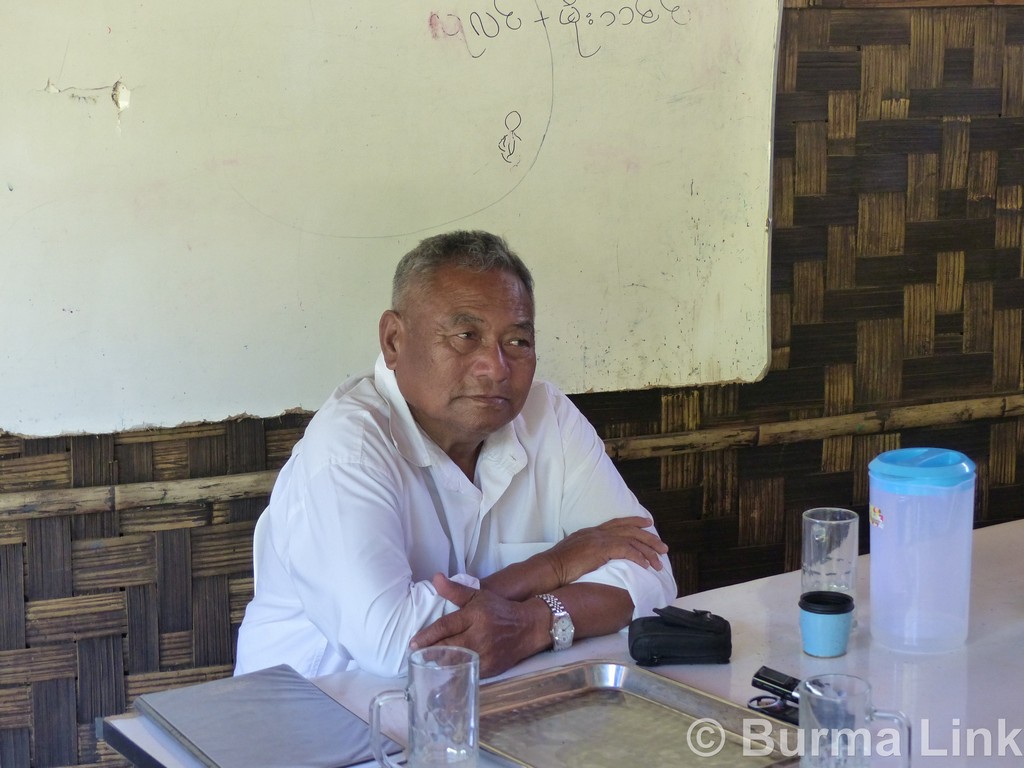
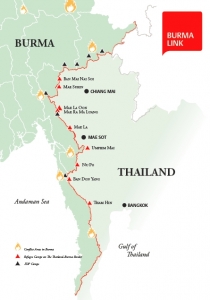
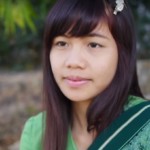
![‘The Burma Army Killed Him [Saw O Moo] – At Least the Government or the Army Should Commit to Not Do This Again’: Paul Sein Twa, Executive Director of KESAN](https://www.burmalink.org/wp-content/uploads/2018/05/Saw-O-Moo-commemoration-Paul-Sein-Twa-speaking-2-150x150.jpg)
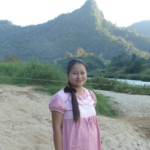
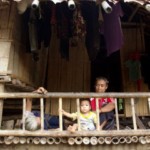
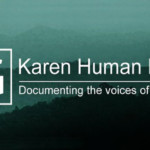
![This Experience [of War] Will Never Disappear from My Mind: Lay Lit, Karen Refugee and Youth Leader](https://www.burmalink.org/wp-content/uploads/2017/09/LayLit2-150x150.jpg)